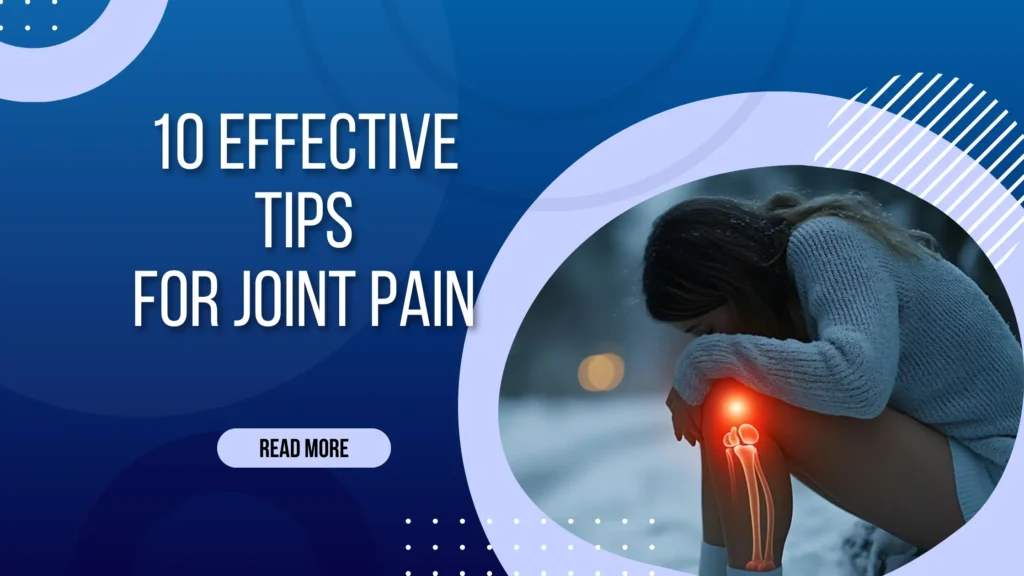Arthritis is a condition that causes inflammation in a joint, leading to pain, swelling, and reduced movement. It can result from a localized issue like pyogenic arthritis or a broader illness such as rheumatoid arthritis. The condition occurs when the protective cartilage that cushions the ends of the bones wears down, causing the bones to rub against each other, leading to discomfort and damage.
Arthritis refers to more than 100 conditions that cause inflammation and damage to the joints, surrounding tissues, and other connective tissues. Arthritis can be categorized into two main types:
Monoarthritis involves the inflammation of only one joint. It can result from causes such as infection, injury, or specific conditions like gout or osteoarthritis. This type typically causes pain, swelling, and limited movement in a single joint.
Polyarthritis affects multiple joints, usually five or more, at the same time. It is commonly seen in autoimmune disorders like rheumatoid arthritis, where the immune system mistakenly attacks the joints. Polyarthritis often leads to more extensive joint damage and requires a more complex treatment approach.
People with rheumatoid arthritis commonly have elevated erythrocyte sedimentation rate (ESR) and C-reactive protein (CRP) levels, which indicate inflammation in the body. Blood tests for rheumatoid factor (RF) and anti-cyclic citrullinated peptide (anti-CCP) antibodies are also often conducted.
If you are suffering from arthritis pain in winter, do visit once at Vishudh Kaya Pain Relief &Multispeciality Clinic, Kharar.
Staying active can make a huge difference in your quality of life with arthritis!
Why Does Arthritis Pain Worsen in Winter?
In winter, people tend to drink less water, which can lead to dehydration. This affects muscles, joints, and ligaments, making them feel stiff and less flexible. Water is essential for joint lubrication, and without enough hydration, joints may become less smooth, causing discomfort. Dehydration also tightens muscles and ligaments, increasing the risk of cramps and injury. The minerals in water can aid in managing arthritis in several ways. Calcium is vital for bone health, and crucial for arthritis sufferers. Magnesium helps alleviate muscle stiffness and inflammation. Potassium supports fluid balance and muscle function, preventing cramps. Sodium, when consumed in moderation, maintains fluid balance, but excessive intake can increase inflammation. Bicarbonate may help neutralize acidity and reduce inflammation. Iron and zinc are important for immune function and tissue repair, which can benefit those with autoimmune arthritis.
Also, less sunlight can lower vitamin D levels, weakening bones and muscles, which can cause more pain and discomfort. To prevent these issues, it’s important to drink enough water, stay active, stretch, and get some sunlight or take vitamin D supplements during the winter months. There is a common myth that cold weather directly impacts arthritis pain, but in reality, weather conditions do not cause or cure arthritis. However, they can influence the progression of the condition and the experience of symptoms. Cold weather can lead to the tightening of muscles, tendons, and blood vessels, which may cause stiffness around the joints, leading to increased pain and a reduced range of motion. On the other hand, hot weather causes muscles, tendons, and blood vessels to relax and expand, improving blood circulation. This increased blood flow brings more nutrients to the affected joints, helping to alleviate compression and stiffness, reduce pain, and enhance the range of motion in the joints.
Tips for Managing Arthritis Pain in Winter
- Eating a Joint-Friendly Diet
- A joint-friendly diet aims to reduce inflammation and promote joint health. It includes anti-inflammatory foods such as
- Fatty fish
- Fruits & Vegetables
- Nuts
- Seeds
- Essential nutrients like
- Vitamin D
- Calcium
- Vitamin C
- Magnesium supports bone and joint strength.
- Spices like
- Turmeric and
- Ginger, along with healthy fats from olive oil and avocados, helps lower inflammation.
Proper hydration with water is key for joint lubrication. It’s important to avoid processed foods, red meat, refined carbs, and sugary drinks, as they can worsen inflammation. This diet helps alleviate arthritis symptoms and supports overall joint function.
Staying Active
Keeping active is key to managing arthritis. Regular exercise not only eases pain and stiffness but also enhances joint mobility, builds muscle strength, and boosts energy. Aim for 150 minutes of moderate aerobic activity and two strength training sessions each week. Low-impact exercises like swimming, cycling, and walking are gentle on the joints, while flexibility exercises like yoga improve balance and reduce stiffness. Indoor activities such as yoga, indoor walking, cycling, and aerobics are perfect during colder months. Always warm up before exercising, start slow, and consult a physiotherapist before beginning any new exercise regimen.
Keeping Joints Warm
Keeping joints warm helps to reduce pain and stiffness from arthritis. Wear warm clothes, use heating pads or warm towels, and take warm baths or showers to relax your joints. Gentle exercises can also help to keep your joints flexible and warm. Insulated clothing and staying in a warm environment can further reduce discomfort.
Maintaining a Healthy Weight
Maintaining a healthy weight is important for managing arthritis, as excess weight adds extra pressure on joints, especially in the knees, hips, and lower back. Carrying additional weight can worsen joint pain and speed up the progression of arthritis. Achieving and keeping a healthy weight can help to reduce inflammation, lessen pain, and improve movement. Additionally, losing weight can improve overall health, reduce the risk of other conditions, and make it easier to engage in physical activity, which further supports joint function. A well-balanced diet and regular exercise are essential for maintaining a healthy weight and managing arthritis symptoms.
Medication
Arthritis medications are used to alleviate pain, reduce inflammation, and slow disease progression. Common options include NSAIDs for pain and inflammation, acetaminophen for pain relief, DMARDs and biologics to control rheumatoid arthritis, corticosteroids for flare-ups, and topical treatments for targeted relief. These medications should be taken under the supervision of a healthcare professional to effectively manage symptoms and protect joint health. Physical therapies help to improve joint flexibility and strength in arthritis patients by strengthening muscles, increasing range of motion, and enhancing overall joint function.
Stay hydrated
Dehydration can lead to increased stiffness and pain in the joints. Water helps to create synovial fluid, a thin layer that cushions & delivers nutrition to the joint. Additionally, drinking sufficient water helps eliminate toxins and reduce inflammation, which can relieve discomfort in patients with arthritis.
Be proactive
Being proactive with arthritis means getting early treatment, staying active, eating healthy, protecting joints, following medical advice, managing stress, resting well, and staying informed to reduce symptoms and improve joint health.
Stress management
Stress management for arthritis involves relaxation exercises, mindfulness, regular physical activity, social support, and adequate rest. These techniques help reduce stress, which can improve pain management and overall well-being.
Take vitamin D
Vitamin D is essential for arthritis management, as it helps to maintain bone health and strengthens the immune system. Insufficient vitamin D can worsen inflammation and symptoms. Adequate intake of sunlight, diet (like fatty fish, eggs, and fortified dairy), or supplements may reduce pain and improve joint function. Always consult a healthcare provider before using supplements to ensure proper dosage.
Talk to your doctor about
Talking to your doctor about arthritis is essential for proper diagnosis, effective treatment, and managing symptoms. Your doctor can guide you on medications, lifestyle changes, and adjustments to your treatment plan. Regular communication helps ensure proper management and improves your quality of life.
Keep your body temperature consistent
Keeping a stable body temperature is important for people with arthritis, as extreme temperatures can worsen symptoms. Cold weather can cause joint stiffness and pain, while heat can increase inflammation. To manage this, individuals should layer clothing for warmth in cold conditions, use heating pads or warm baths for relief, and avoid overheating by staying hydrated and using cooling methods when necessary. Maintaining a comfortable temperature helps reduce joint strain and manage arthritis symptoms more effectively.
Conclusion
Winter can be difficult for those with arthritis, but you don’t have to endure the pain. By staying warm, staying active, and eating well, you can maintain a comfortable and active lifestyle during the colder months. Don’t forget to consult at Vishudh Kaya Pain Relief &Multispeciality Clinic for your arthritis pain. These strategies are helpful, but a specialist can offer a personalized treatment and management plan for your specific needs.
The benefits of the treatment go beyond just traditional pain management. Even expert professionals have suggested that sciatica pain treatment by chiropractors has yielded excellent results. Committing to regular chiropractic care is an investment in your enduring health and well-being. Beyond merely relieving pain, chiropractic adjustments provide a comprehensive approach to sustaining optimal functionality, preventing injuries, and augmenting overall quality of life.
Frequently Asked Questions
How do you treat arthritis in the winter?
With the appropriate treatment, including medications (allopathic, homoeopathic, & ayurvedic) and therapies (physiotherapy, osteopathy & chiropractic), arthritis pain can be controlled, enhancing your quality of life
Which drink is good for arthritis?
Helpful drinks for arthritis include –
Water (keeps joints hydrated)
Green tea (packed with antioxidants)
Turmeric milk (curcumin reduces inflammation)
Ginger tea (a natural anti-inflammatory)
Cherry juice (alleviates pain)
Cranberry juice (anti-inflammatory properties),
Lemon water (boosts joint health with vitamin C).
It’s best to avoid sugary drinks and too much caffeine, as they can increase inflammation.
Can I Admit Two Elderly People At A Time?
Of course, you can! We support making a strong bond with your loved ones even if you are staying away from them. Any type of food from your home is allowed.Ut enim ad minim veniam, quis nostrud exercitation ullamco laboris nisi ut aliquip ex ea commodo consequat.
Is milk good for arthritis?
Yes, milk is helpful for arthritis because dairy products can lower uric acid levels in the blood, a major contributor to gout. The benefits of dairy may exceed the risks of purines, making it a good option for individuals with or at risk of gout. Additionally, dairy products have anti-inflammatory effects. Milk contains several nutrients that can benefit those with arthritis.
What are 5 vegetables to avoid for arthritis?
Certain vegetables can aggravate arthritis symptoms.
Nightshade vegetables like tomatoes, peppers, and potatoes contain solanine, which may cause inflammation for some individuals.
Corn, which is high in omega-6 fatty acids, can promote inflammation.
Peas, being part of the legume family, contain lectins that might contribute to inflammation.
White potatoes, with their high glycemic index, can lead to blood sugar spikes and trigger inflammation.
Pickled vegetables, high in sodium, may cause bloating and increase joint pain.
Opting for alternatives such as sweet potatoes, leafy greens, and fresh vegetables could help reduce symptoms.


